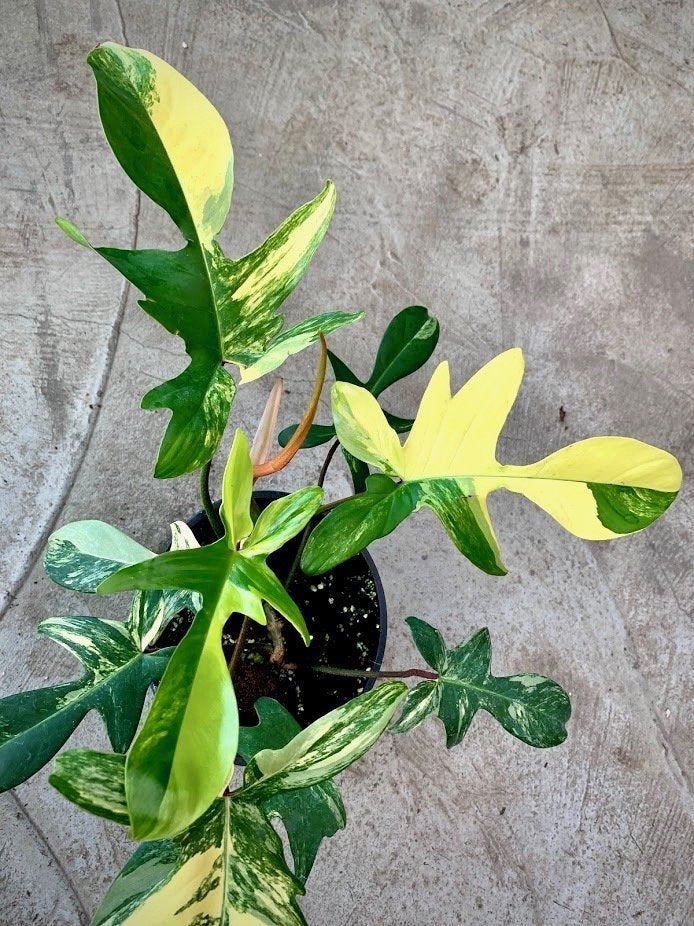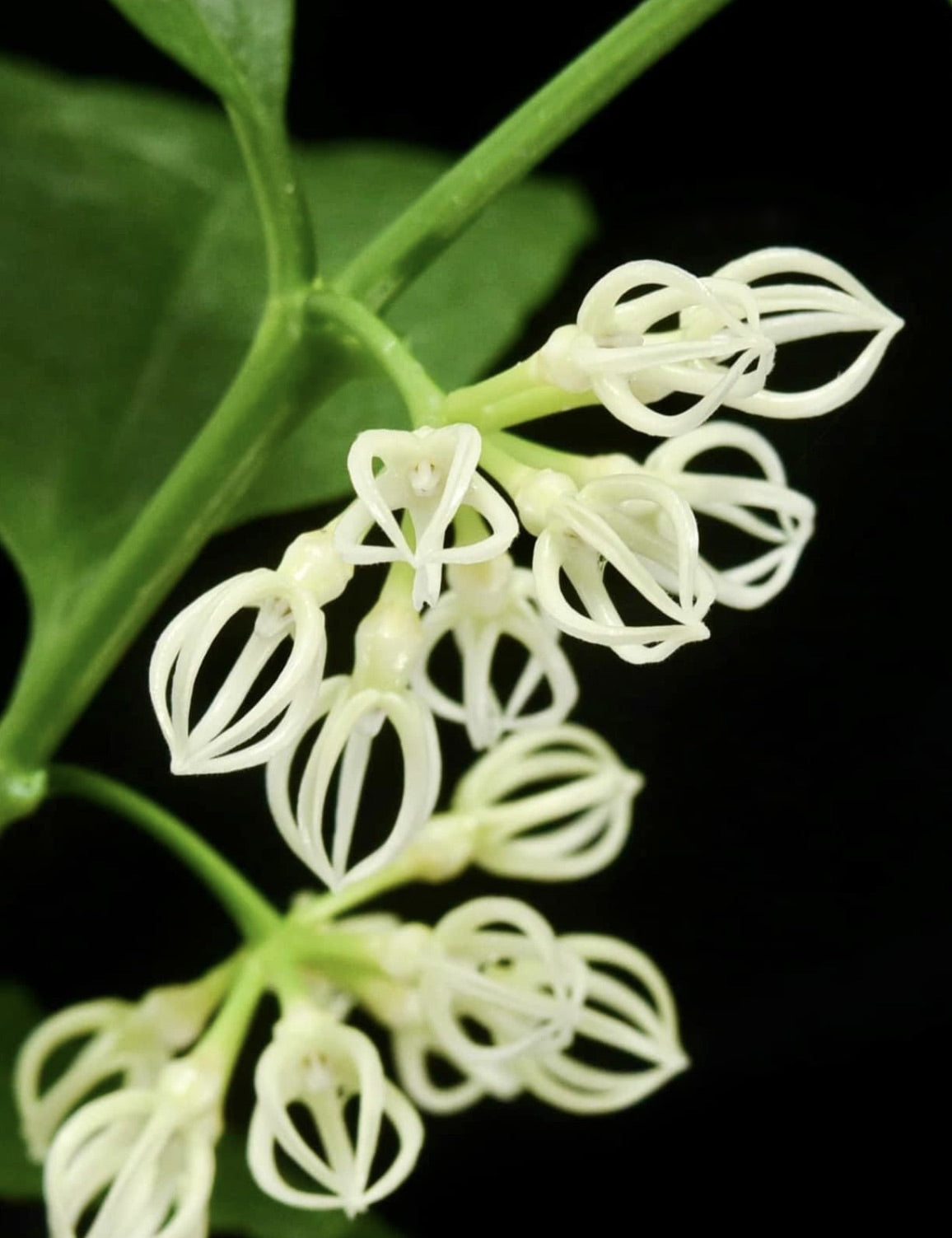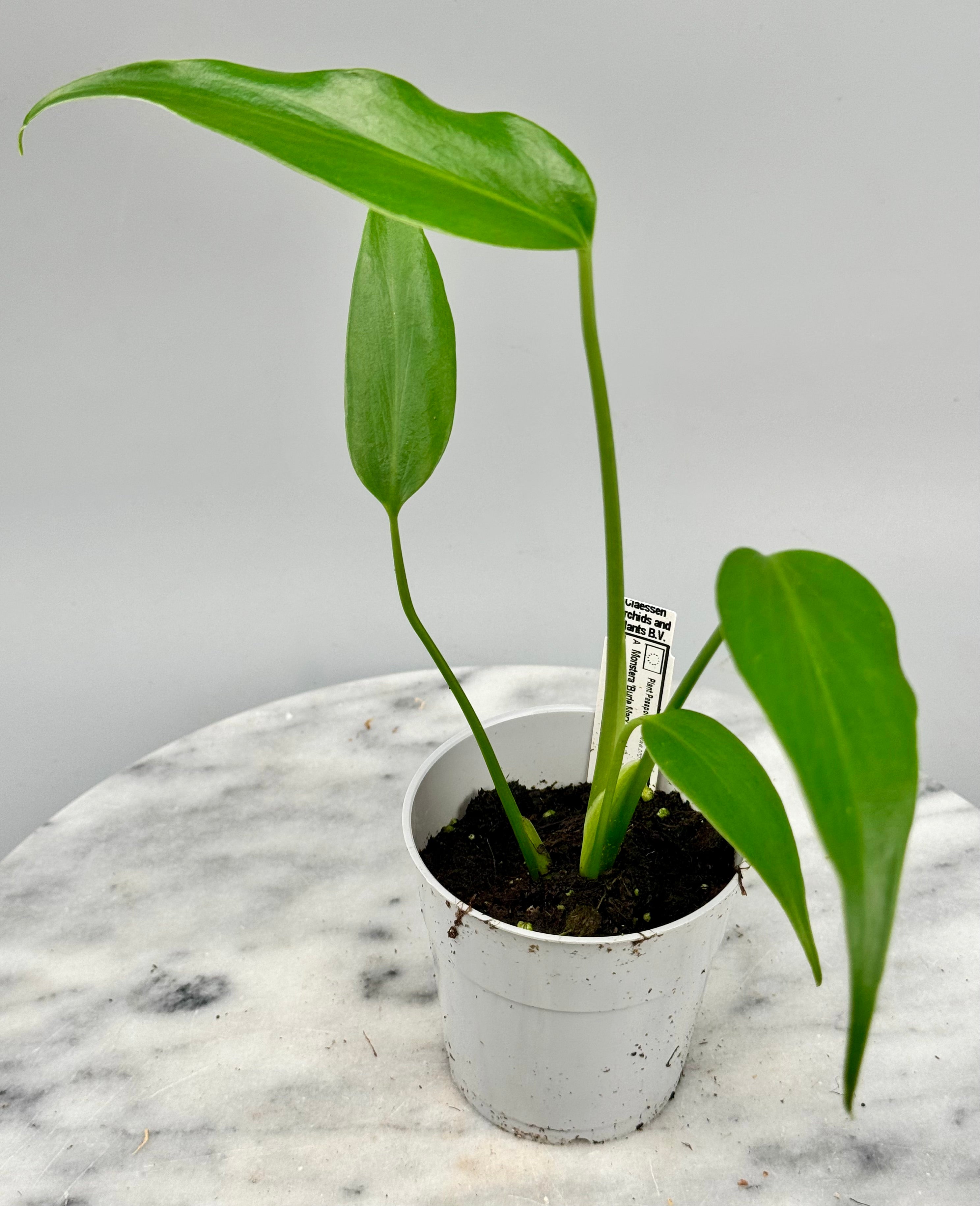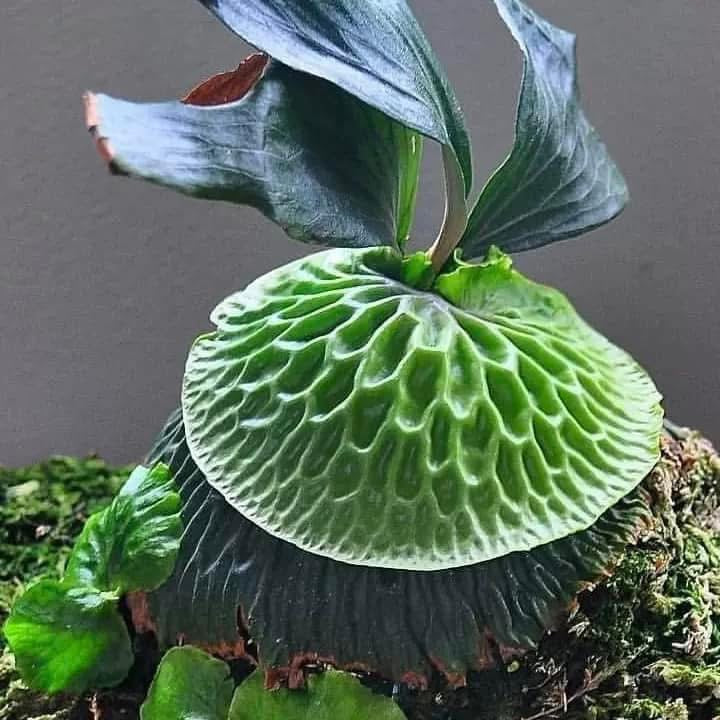Climbing plants such as Monsteras and Philodendrons have the unique ability to use their environment for optimal growth and development. They grab onto such things as rocks, trees, moss sticks and other materials to grow against.
The evolution of leaf size and leaf shape in response to the ability to climb
The Monstera dubia is an unusual houseplant, native to the tropical rain forests of South America. This plant has the distinct and intriguing characteristic of responding to the presence of a structure on which it can climb. In doing so, it changes leaf shape with new growth, as well as growth direction: toward the light, upward.
From small, dense leaves to holes and deep fenestrations
The moment the Monstera dubia in the wild has found the tree to grow against, a different process begins. The small leaves embrace the trunk and with each new leaf a special metamorphosis progresses. The silvery leaves begin to droop further and further from the trunk and spread to absorb more sunlight.
Filtering sunlight through large leaves
In addition, the leaves get more and more holes and fenestrations (notches in the leaf). In this way, the Monstera (hole plant) ensures that light is filtered and reaches the lower, smaller leaves as well.
The adaptability of the climbing plant in both nature and the home
The Monstera dubia's adaptation to space is a great example of how these types of tropical plants have evolved to respond to external stimuli. It is a model for how climbing houseplants can adapt the shape and size of their leaves to make the best use of the natural light available in that particular situation. This is one of the reasons why climbing houseplants are so popular among indoor plant enthusiasts and collectors.































